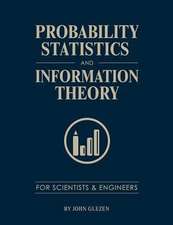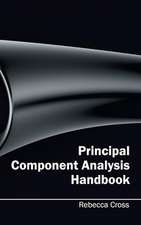A Course in Morphometrics for Biologists: Geometry and Statistics for Studies of Organismal Form
Autor Fred L. Booksteinen Limba Engleză Hardback – 3 oct 2018
Preț: 600.51 lei
Preț vechi: 674.72 lei
-11% Nou
Puncte Express: 901
Preț estimativ în valută:
114.94€ • 119.54$ • 96.32£
114.94€ • 119.54$ • 96.32£
Carte tipărită la comandă
Livrare economică 13-27 martie
Preluare comenzi: 021 569.72.76
Specificații
ISBN-13: 9781107190948
ISBN-10: 1107190940
Pagini: 544
Dimensiuni: 159 x 236 x 27 mm
Greutate: 1 kg
Editura: Cambridge University Press
Colecția Cambridge University Press
Locul publicării:New York, United States
ISBN-10: 1107190940
Pagini: 544
Dimensiuni: 159 x 236 x 27 mm
Greutate: 1 kg
Editura: Cambridge University Press
Colecția Cambridge University Press
Locul publicării:New York, United States
Cuprins
1. What this book is about; 2. Getting started; 3. Multiple regression in general and in special settings; 4. Transition to multivariate analysis; 5. Geometric morphometrics.
Recenzii
'This is a pioneering and outstanding book with its interdisciplinary style of presentation, which aids the reader's understanding of morphometrics (shape analysis) and explains how to apply its tools. It does not hesitate to use a wide variety of subjects to achieve its objectives: statistics, algebra and arithmetic. To make it a hands-on text, it also provides S+ code of the tools described. The text is very user-friendly as it is written in an informal and accessible style. The book will be essential reading for researchers and students in the area; it demonstrates exquisite scholarship and I cannot recommend this text more highly.' K. V. Mardia, University of Leeds
'This is a unique book; one that not only provides the basic formulae and concepts for undertaking quantitative data analyses, but also explains and illustrates the origins of these concepts, the controversies they embody, their links to other branches of science, and the personalities behind their creation. It's a marvellous tour de force and one I suspect few others could have written with such verve and authority. Required reading for anyone seeking to understand - and especially to teach - methods of linear data analysis generally and the analysis of morphological data in particular.' Norman MacLeod, The Natural History Museum, London
'This much-needed book provides an introduction to morphometric methods accessible to the biologist. Beyond an exposition of the basic machinery of morphometrics, Bookstein includes history, context, and a re-examination of the bases for morphometric analyses. A welcome contribution to the literature, this volume will be a mandatory and oft-referenced addition to both the novice and experienced morphometrician's library. After twenty years, I finally have a textbook for my courses in morphometrics. Outstanding!' Dennis Slice, Florida State University
'Statistics is the common language of the sciences, but few scientists speak it as fluently as Fred L. Bookstein. His new book starts by introducing the basic vocabulary of statistics - averages, correlation, regression - and continues to explain the foundations of multivariate statistics and geometric morphometrics. Even though written for advanced students, the historical, conceptual, and geometrical insights in this book will surprise even experienced scientists and statisticians.' Philipp Mitteröcker, University of Vienna
'This is a unique book; one that not only provides the basic formulae and concepts for undertaking quantitative data analyses, but also explains and illustrates the origins of these concepts, the controversies they embody, their links to other branches of science, and the personalities behind their creation. It's a marvellous tour de force and one I suspect few others could have written with such verve and authority. Required reading for anyone seeking to understand - and especially to teach - methods of linear data analysis generally and the analysis of morphological data in particular.' Norman MacLeod, The Natural History Museum, London
'This much-needed book provides an introduction to morphometric methods accessible to the biologist. Beyond an exposition of the basic machinery of morphometrics, Bookstein includes history, context, and a re-examination of the bases for morphometric analyses. A welcome contribution to the literature, this volume will be a mandatory and oft-referenced addition to both the novice and experienced morphometrician's library. After twenty years, I finally have a textbook for my courses in morphometrics. Outstanding!' Dennis Slice, Florida State University
'Statistics is the common language of the sciences, but few scientists speak it as fluently as Fred L. Bookstein. His new book starts by introducing the basic vocabulary of statistics - averages, correlation, regression - and continues to explain the foundations of multivariate statistics and geometric morphometrics. Even though written for advanced students, the historical, conceptual, and geometrical insights in this book will surprise even experienced scientists and statisticians.' Philipp Mitteröcker, University of Vienna
Notă biografică
Descriere
This book frames and demonstrates the best of modern morphometric methods, bridging the gap between biostatistics and organismal biology.























